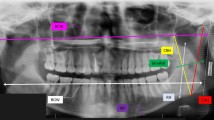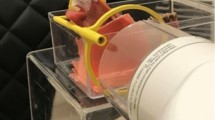Abstract
Computerized bone age assessment was widely studied for the physicians and radiologists to evaluate children with endocrinological disorders, growth retardation and treatment monitoring. Unfortunately, the morphological assessment of phalanges and epiphyseal/metaphyseal region (EMROIs) in hand radiogram with non-uniform intensity or full of the noise is intricacies and hardly to be segmented, and which was also time-consuming. So, a new segmentation technique for handy skeleton was proposed. The first step, the properties of position and brightness on phalanges and EMORIs are analyzed by a series of image preprocessing procedures. Next, 14 EMORIs of five phalanges were examined by the sum-variance (SV) scheme for the 100 boys and 100 girls. Last, four statistical indices are used to evaluate the segmentation. The experiment performance is shown the better result than the gradient vector flow (GVF) snake, and the approximation of adaptive two-means clustering. The study showed the proposed hierarchical algorithm for the extraction and segmentation of phalangeal bone regions of interests (PROIs) and EMROIs are effective, especially for the EMROIs segmentation by using the proposed algorithm.









Similar content being viewed by others
References
Bhan A (2014) Parametric models for segmentation of Cardiac MRI database with geometrical interpretation. In: Signal Processing and Integrated Networks (SPIN), 2014 International Conference on IEEE, pp 711–715
Buckler JM (1983) How to make the most of bone ages. Arch Dis Child 58:761–763
Chai HY, Tan TS, Gan HS, Lai KW (2013) Multipurpose contrast enhancement on epiphyseal plates and ossification centers for bone age assessment. Biomed Eng Online 12(1):1–19
Davis LM, Theobald BJ, Lines J (2012) On the segmentation and classification of hand radiographs. Int J Neural Syst 22(05):1250020
Ferdinand H, Inga B, Heike R, Thomas D, Hauke S (2013) Bone age assessment using the classifying generalized hough transform. In: Pattern Recognit. Springer, Berlin, pp 313–322
Ferdinand H, Gordon B, Thomas MD (2014) Epiphyses localization for bone age assessment using the discriminative generalized hough transform. In: Bildverarbeitung für die Medizin. Springer, Berlin
Giordano D, Spampinato C, Scarciofalo G, Leonardi R (2010) An automatic system for skeletal bone age measurement by robust processing of carpal and epiphysial/metaphysial bones. IEEE Trans Instrum Meas 59(10):2539–2553
Greulich WW, Pyle S (1971) Radiographic, atlas of skeletal development of hand wrist, 2nd edn. Stanford University Press, Standford
Harmsen M, Fischer B, Schramm H, Seidl T (2013) Support vector machine classification based on correlation prototypes applied to bone age assessment. IEEE J Biomed Health Inform 17(1):190–197
Hsieh CW, Jong TL, Tiu CM (2007) Bone age estimation based on phalanx information with fuzzy constrain of carpals. Med Biol Eng Comput 45(3):283–295
Hsieh CW, Liu TC, Jong TL, Chen CY, Tiu CM, Chan DY (2011) Fast and fully automatic phalanx segmentation using a grayscale-histogram morphology algorithm. Opt Eng 50(8):087007
Hsieh CW, Chen CY, Jong TL, Liu TC, Chiu CH (2012) Automatic segmentation of phalanx and epiphyseal/metaphyseal region by gamma parameter enhancement algorithm. Meas Sci Rev 12(1):21–27
Lee JS (1981) Refined filtering of image noise using local statistics. Comput Graphs Image Process 15:380–389
Lehmann TM, Beier D, Thies C, Seidl T (2005) Segmentation of medical images combining local, regional, global, and hierarchical distances into a bottom-up region merging scheme. In: Medical Imaging. International Society for Optics and Photonics, pp 546–555
Lin HH, Shu SG, Lin YH, Yu SS (2012) Bone age cluster assessment and feature clustering analysis based on phalangeal image rough segmentation. Pattern Recogn 45(1):322–332
Ostu NA (1979) Threshold selection method from gray-level histograms. IEEE Trans Syst Man Cybern 9(1):62–66
Pietka E, Gertych A, Pospiech S, Cao F, Huang HK, Gilsanz V (2001) Computer-assisted bone age assessment: image preprocessing and epiphyseal. IEEE Trans Med Imaging 20(8):715–729
Poznanski A, Hernandez R, Guire K, Bereza U, Garn S (1978) Carpal length in children–a useful measurement in the diagnosis of rheumatoid arthritis and some concenital malformation syndromes. Radiology 129(3):661–668
Ruppertshofen H (2013) Automatic modeling of anatomical variability for object localization in medical images. BoD-Books on Demand
Sezgin M, Sankur B (2004) Survey over image thresholding techniques and quantitative performance evaluation. J Electron Imaging 13(1):146–168
Tanner JM, Healy MRJ, Goldstein H (2001) Assessment of skeletal maturity and prediction of adult height (TW3 Method). Saunders, London
Thangam P, Thanushkodi K, Mahendiran TV (2013) PSO for graph-based segmentation of wrist bones in bone age assessment. Int J Comput Commun 8(1):153–160
Thodberg HH, Kreiborg S, Juul A, Pedersen KD (2009) The BoneXpert method for automated determination of skeletal maturity. IEEE Trans Med Imaging 28(1):52–66
Author information
Authors and Affiliations
Corresponding author
Rights and permissions
About this article
Cite this article
Hsieh, CW., Liu, HC., Jong, TL. et al. A hierarchical algorithm for phalangeal and epiphyseal/metaphyseal segmentation. Multimed Tools Appl 76, 3047–3063 (2017). https://doi.org/10.1007/s11042-016-3278-5
Received:
Revised:
Accepted:
Published:
Issue Date:
DOI: https://doi.org/10.1007/s11042-016-3278-5




